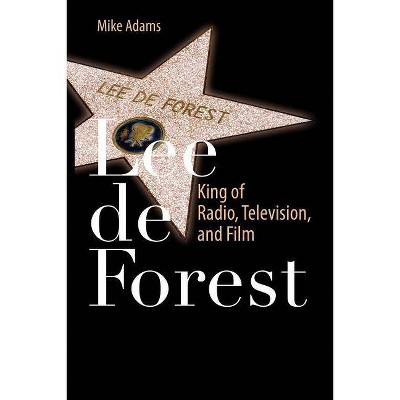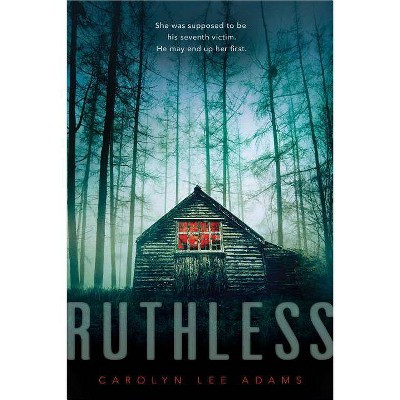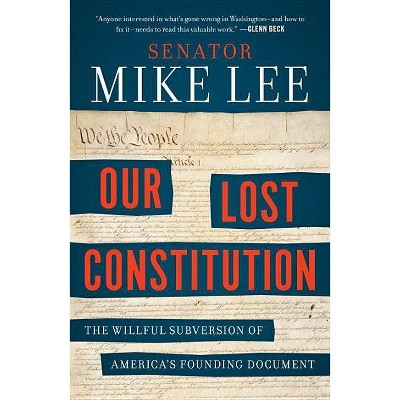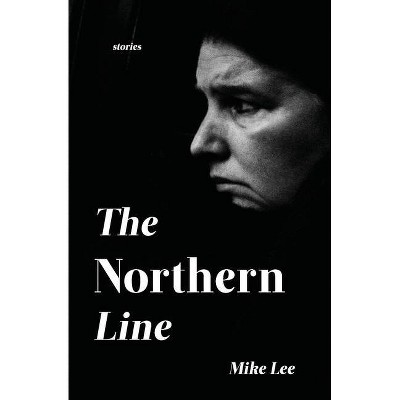Lee de Forest - by Mike Adams (Paperback)

Similar Products
Products of same category from the store
AllProduct info
<p/><br></br><p><b> About the Book </b></p></br></br>This volume explores both the career of Lee de Forest and the early history of film making, exploring the work of de Forest as the scientist and producer, director, and writer of content who changed the history of film through the incorporation of sound.<p/><br></br><p><b> Book Synopsis </b></p></br></br><p>Chapter 1 Born to Invent.- The Century of the Inventor.- Toward Communication Without Wires.- Inventing the Motion Picture.- Enter Lee de Forest.- Toward the New Century.- Chapter 2 The Race for Wireless.- The Significance of Marconi.- De Forest's Early Career.- Seeking a Better Detector.- The Complex Wireless Business.- A Silent Film Industry Emerges.- Chapter 3 The Meaning of the Audion.- The Dawn of Modern Electronics.- De Forest Creates the Audion.- Broadcasting's Pioneers.- De Forest as an Early Broadcaster.- De Forest's Complex Love Lives.- Chapter 4 California Days.- Film Finds Language and Locations.- De Forest and the Law.- Selling the Audion.- The High Bridge Broadcasts.- The Watershed Year 1920.- Chapter 5 Radio's Arrival.- The RCA Agreements.- Defining American Radio Broadcasting.- Hugo Gernsback and Radio News.- Creating a Radio Audience.- Radio Technology Matures.- Chapter 6 Phonofilm, the Promise.- De Forest's Inspiration.- Inventing Phonofilm.- The Case Connection.- The Arc of Family.- The Silent Film as Mature Medium.- Chapter 7 Phonofilm, the Realization.- Case is Impatient.- De Forest Introduces Phonofilm.- The Business of Phonofilm.- De Forest Diversions.- What the Phonofilms Say.- Chapter 8 Phonofilm, the Rejection.- A Deaf Ear to Phonofilm.- Death by Vitaphone.- The End of Mary.- The Industry and the Public Adapt.- Sound-On-Film Technology Wars.- Chapter 9 Phonofilm, the Lawyers.- The Fox-Case Suit.- The Final Days of Phonofilm.- The Loneliness of Lee.- Hollywood Happiness.- Old Patents and New Awards.- Chapter 10 Lesson and Legacy.- The Father of Radio.- Awards and Accolades.- Other Opinions.- And In The End.- The Significance of Lee De Forest.</p><p/><br></br><p><b> From the Back Cover </b></p></br></br><p>Lee de Forest, Yale doctorate and Oscar winner, gave voice to the radio and the motion picture. Yet by the 1930s, after the radio and the Talkies were regular features of American life, Lee de Forest had seemingly lost everything. Why? Why didn't he receive the recognition and acclaim he sought his entire life until years later in 1959, when he was awarded an Oscar?</p><p>A lifelong innovator, Lee de Forest invented the three-element vacuum tube which he developed between 1906 and 1916 as a detector, amplifier, and oscillator of radio waves. As early as 1907, he was broadcasting music programming. In 1918, he began to develop a system for recording and playing back sound by using light patterns on motion picture film. In order to promote and demonstrate his process he made hundreds of short sound films, found theatres for their showing, and issued publicity to gain audiences for his invention. While he received many patents for this technology, he was ignored by the film industry.</p><p><i>Lee de Forest, King of Radio, Television, and Film</i> is about the process of invention--how inventors really get ideas and how every inventor learns that they must know the work of those who came before, and why the myth of the lone inventor and the "Aha! moment" is largely a fiction.</p><p>Through his inventions, Lee de Forest made possible the mass entertainment media we enjoy today. This is his story.</p><p/><br></br><p><b> Review Quotes </b></p></br></br><br><p>From the reviews: </p><p>"'Lee de Forest: King of Radio, Television and Film' - Author Mike Adams, a media professor at San Jose State University, knows radio and film: he brings those worlds together in his discussion of de Forest, including the inventor's role in the film industry. This is a well-documented history book that media and technology history fans will appreciate." (Radio World, September, 2012)</p><p>"Lee de Forest: King of Radio, Television, and Film ... is the first full biography of the once-famous inventor to appear in years. Adams, a longtime San Jose State University faculty member and historian, has plumbed the de Forest archive for this study which brings to light many new details of a complex and sometimes maddening man. ... An appendix provides details of many key patents. ... This is an important book for the too-thin shelf on radio's pioneers." (Chris Sterling, CBQ Communication Booknotes Quarterly, Vol. 43 (2), April-June, 2012)</p><p>"We have a new and insightful biography of Lee de Forest, by long-term radio-history author Mike Adams. ... the reader gets 'basic training' in motion-picture history and production theory, a helpful addition. ... Adams treats the personality of de Forest with realism ... . he had his admirers, especially himself, and did perform useful (!) work. This book is a real contribution to de Forest lore, well organized and satisfyingly written." (Ludwell Sibley, Tube Collector, February, 2012)</p><p>"This book is well written, flows well and is easy to read. ... I enjoyed the book very much. There are many very interesting images from the de Forest papers that I had not seen before ... . The book and the images therein provide an opportunity for further research and insights into the real history of de Forest. ... I certainly recommend this thought-provoking book to anyone interested in de Forest's contributions to the evolution of radio ... ." (Eric Wenaas, Antique Wireless Journal, Vol. 53 (1), January, 2012)</p><p>"At long last we have a biography of Lee de Forest, the self-proclaimed 'father of radio.' Mike Adams brings to life the story of a great inventor. ... the reader will discover that Lee de Forest's contributions went well beyond radio's sound technology. ... The book is organized into ten chapters walking the reader through life, controversies, inventions, and contributions. ... a very significant contribution to the history of electronic media and motion pictures and to the scholarship and classrooms of both disciplines." (Donald G. Godfrey, Journal of Broadcasting & Electronic Media, Vol. 56 (2), 2012)</p><br><p/><br></br><p><b> About the Author </b></p></br></br>Mike Adams has been a radio personality and a film maker. Currently he is a professor of radio, television, and film at San Jose State University, where he has been a department chair and an associate dean. As a researcher and writer of broadcast and early technology history, he created two award-winning documentaries for PBS, "Radio Collector," and "Broadcasting's Forgotten Father." He has had published numerous articles and three books, the most recent of which is <i>Charles Herrold, Inventor of Radio Broadcasting</i>. More information about the author and his work can be found at www.mikeadams.org and www.leedeforest.org
Price History
Cheapest price in the interval: 49.99 on November 8, 2021
Most expensive price in the interval: 49.99 on December 20, 2021
Price Archive shows prices from various stores, lets you see history and find the cheapest. There is no actual sale on the website. For all support, inquiry and suggestion messages communication@pricearchive.us



















